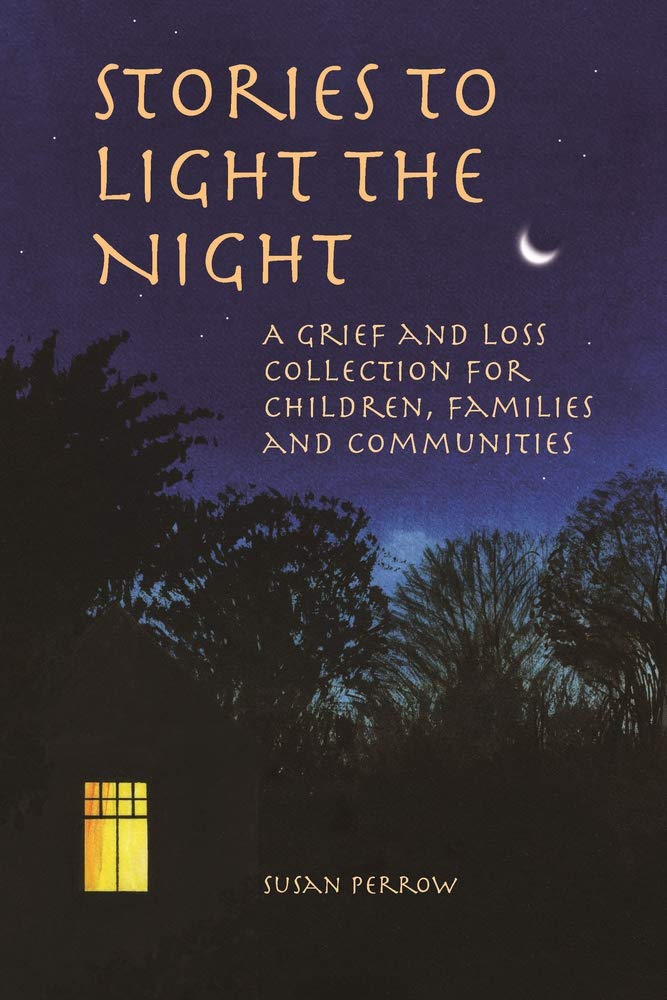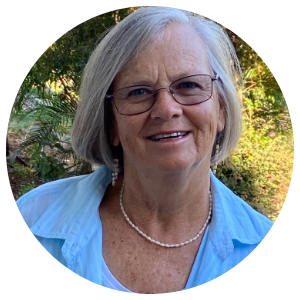by Susan Perrow
In the weeks before my mother died, I captured images of my love and appreciation for her in a poem entitled ‘My Mother, My Rose’. While sitting by her hospital bed, while she was still conscious, and even when she was unconscious, I was able to read it to her – over and over… ‘My Mother is the rose in the garden of my life.’
Little did I know just how important these images would be for me after she passed, when I was struggling to come to terms with the reality of ‘My Mother was the rose in the garden of my life.’ One verse especially shone a flicker of a light in the dark night of my grief. This tiny light helped me slowly find my way forward and gave me strength to carry on my responsibilities as a mother and a director of a school.
And when comes the time
For the rose in my garden to die –
Not brown and withered will I let it be,
But the sweet petal memories
Will be wrapped in silken haze
To carry close to my heart
For the rest of my days
Even now, 30 years later, the image of ‘sweet petal memories wrapped in silken haze’ still lifts me out of my sadness at such a loss. And still, 30 years later, if I am given a bunch of cut roses, once they have lived out their life in a vase in my house I gather their petals into a bowl and then symbolically spread them in my garden.
Many years before experiencing the loss of my mother, a different kind of personal loss was greatly helped by the power of words. I was at an important crossroads in my life and was battling significant anxiety and loss of confidence in my decision-making. To follow my heart or to follow the expectations of others, this was my dilemma at the age of 19 years.
Then a gift came my way – a little book called Jonathan Livingston Seagull. The story of a seagull soaring high in the sky gave me strength and confidence to follow my heart direction. I am ever grateful for this modern classic about seeking a higher purpose in life, even if your flock, tribe or neighbourhood finds your ambition threatening. For most gulls, it is not flying that matters, but eating. For Jonathan, it was not eating that mattered, but flight.
In 1671, John Milton wrote:
… apt words have power to swage
The tumours of a troubled mind.
And are as balm to festered wounds
Almost two thousand years before Milton penned this wisdom on the healing power of words, a marble engraving was commissioned by King Ramses ll above the entrance to the royal chamber of an Egyptian palace where books were stored. Considered to be the oldest known library maxim in the world, the translated meaning is ‘The house of healing for the soul’.
Bibliotherapists enthusiastically share this as the first recorded evidence of the existence of ‘bibliotherapy’, a creative arts process that involves the reading of specific texts with the purpose of healing.
However, healing through words and stories dates back a long time before poetry, ballads and stories were ever written down, and an even longer time before the emergence of the term ‘bibliotherapy’. Out of deep respect for indigenous cultures worldwide, it is important in this introduction to honour the magnificence of their oral history.
Before books… before writing… for thousands of years, many thousands of years, oral storytelling was integral to our humanity. Ben Okri, a Nigerian poet and novelist, eloquently states that ‘The universe began as a story… we are part human, part stories’.
The storyteller was the carrier of folklore and morals, the teacher, and the healer. His or her words were a soothing and strengthening and motivating balm for children and adults alike.
In many indigenous cultures, ‘story’ embraced, and still embraces, everything – all life, connectedness, nature and community. The stories and the storyteller stitched life and purpose and earth and sky together, mostly using images and motifs from the natural world: animals, birds, trees, mountains, clouds, stars, moon and sun.
In times of grief and loss, strength would be drawn from the stars, solace gained from sitting by a river, pain eased by walking through a forest. Stories were created that wove nature threads into healing journeys, and to this day continue to weave their healing work.
The world has so much to learn from this wisdom.
Intentions
The healing power of words and stories is the underlying premise for this collection of therapeutic stories on grief and loss. However, it is important that the word ‘healing’ is understood as an intention only… a humble intention to help. One needs to approach this work with humility.
The most effective support for grief offers a range of options, none of which can claim to be ‘healing’. Most kinds of grief cannot be healed – but they can be supported, nursed, helped.
Grief is a highly individualized experience. Different ages, different people and different cultures grieve in diverse ways and respond to supportive modalities in in dividual and different ways. Recent decades have seen a broadening of attention to consider cognitive, social, cultural and spiritual dimensions to the study of grief, as well as the traditional focus on emotional consequences.
A central process in grieving is the attempt to reaffirm or reconstruct a world of meaning that has been challenged by loss. Story therapy can help this process. It can be used together with individual counselling, group support, community support, rituals, psycho-educational programmes and online support.
Story therapy can help navigate the emotions that come with profound loss. By allowing rather than resisting the truth, and by dressing it with the fabric of the imagination, stories can help the journey of weaving the truth into the wholeness of everyday life. Stories for grief and loss are emphatically not intended to distract from the experience of loss, but can enable a working-through of the experience.
The shortest distance between truth and a human being is a story
Anthony de Mello
Overview
The stories in this collection have been enriched by the wellspring of oral and written story history. Of the 94 stories in the book, as well as many written by me, there are contributions by writers from most continents and cultures. The web of creativity spans from Australia to India, Denmark to Bulgaria, Scotland to Kenya, Slovenia to the UK, Spain to China, the USA to Croatia, Romania to the Philippines, Japan to Mexico and back to Australia.
The stories from the 34 contributors connect strongly to personal situations. They include descriptions of whom the story was written for, the age group and the situation. The writers are psychologists, social workers, nurses, teachers, parents and grandparents, plus three children from the ‘Our Kids – Healing with Words’ Hospital Project (a creative writing project for children living with chronic and serious illness). Some have written other therapeutic stories before, but for others their contribution is their first attempt at story therapy, and they have shared it together with the documented help that it provided.
Some of the stories include an activity as an extension to the therapeutic process – making a memory treasure box, a mobile, a felt star, a knitted blanket, a scrapbook, a collage, some painted stones, a photo album, a weaving, planting a tree. Other stories are simply shared – for the reader or listener to digest and work with – in their own way and in their own time.
The comprehensive collection gives the opportunity for the reader to choose a story, or stories, that may resonate with their own personal situation of loss, or the personal situation of their client or family or school or community.
My Journey in Compiling this Collection
For many years I have been running therapeutic story-writing seminars – both nationally and internationally. At almost every seminar, whether the participant number was as low as six or as high as a hundred, the theme of grief and loss has been present. Either there has been a need to write a story for someone else – a child, teenager or adult – or for a group who has suffered trauma or loss, or sometimes grieving participants have been writing stories for themselves.
Often the question has been asked – when will you publish a book to address this theme? I have struggled with the responsibility of this, however the many heart- felt contributions from others and the positive responses to my own stories have encouraged its birth.
My confidence grew when it was pointed out to me, several times by different health professionals, that it is possible to offer a book with the theme of grief and loss that isn’t ‘clinical’. I am not a psychologist, but I have a talent for writing stories, and to the best of my ability, I am thorough with my documentation of ‘when, where, for whom, what for and what happened next’. Such documentation is an integral part of therapeutic story-writing.
Hence I make no apology that this collection and its commentaries are not written from a clinical, explicitly psychotherapeutic and theoretical perspective, but rather from documented lived experiences. Readers seeking more explicitly clinical-therapeutic and theoretical approaches to ‘story’ are recommended to consult, respectively, Denborough (2014), Gersie (1997), Golding (2014), Jones & Pimenta (2020), Marr (2019) and Mellon (2019); and Bassil-Morozow (2020), Boyd (2010), Bruner (2002), Kearney (2001) and Rose & Philpot (2004).
I can also share that this collection, unlike my previous ones, is not just for children. From the moment I pondered the writing of this book, it seemed important that the collection would include stories for all ages. The experience of grief and loss has no boundaries: when someone dies, no matter at what age, the close family and the extended family and the friends and the community are often all involved.
From Stories to Light the Night: A Grief and Loss Collection for Children, Families and Communities by Susan Perrow, published by Hawthorn Press, paperback (226 pages).
Find out more:


SUSAN PERROW is a pioneer of healing storytelling, of story medicine. She runs story writing workshops around the world, across her vast land of Australia and online. Sharing the right story at the right time with a child, a family, a community, is a sensitive way of addressing loss. Her widely translated Healing Stories for Challenging Behaviour, Therapeutic Storytelling, and An A-Z Collection of Behaviour Tales are published by Hawthorn Press.
Her website www.susanperrow.com has lots more info, and she also has a presence on Facebook, LinkedIn and Instagram.


